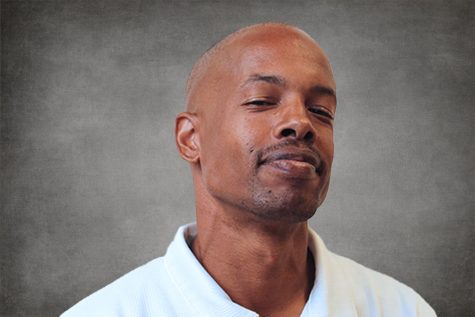Faults hinder construction options, alter project scope
Hayward Fault’s seismic network extends throughout campus
Oct 21, 2016
Earthquake fault lines indicate where seismic activity will occur, but to date there is no sure way to predict when or what size earthquake will erupt from the fractured mantle supporting the places we live, work and learn.
With the $73 million Campus Center Project structurally complete and fully functional, save for a few final cosmetic adjustments, the effort to further modernize Contra Costa College’s aging campus now has to shift from new construction to the rehabilitation of older buildings.
“There were multiple meetings between four different committees, but our options are remodel or refurbish at best,” Academic Senate President Beth Goehring said. “We were hoping to rework the Fitness Center and expand it to two levels, but maintaining the maximum structural stability of the building limits renovation options.”
The College Council unanimously approved a $95 million tentative construction plan last August to revitalize the Gym Annex, both locker rooms and build a new Police Services Center among other structures, using Measure E funds.
But District Facilities Planner Ray Pyle says trenching, a process used to determine the seismic safety of a given location, was inconclusive in some areas, which limited the construction options the district planner was left with.
“Whether or not an area is near a fault line, the first thing engineers figure out is if the area in question is buildable,” Pyle said. “At CCC, trenching is done at a depth of 15-20 feet to find Cam, which is soil that has been in place for 11,000 years or more.”
Some areas of campus are clear and some are within safe boundaries to build. The soil inspection places a build site into one of three zones. Green zones mean the trench is clear of fault activity; red areas show fault traces and are unsafe to build on.
Most of the lower portion of the CCC campus, which contains the GA Building, falls into the yellow zone. In those areas trench workers have not found fault activity in the soil, however, they have yet to dig deep enough to discover pre-holocene soil. Trenching is still ongoing on campus; workers were digging, inspecting and back-filling open trenches in the Gymnasium parking lot for the better part of this semester.
After inspectors take their soil samples, a preliminary report summary takes about four to six weeks to create. Seismic engineering has advanced since CCC moved from its temporary location at the Kaiser Shipyards to its current San Pablo location 60 years ago.
The new Campus Center buildings feature up-to-date construction methods that adhere to California’s seismic code. Wider footings tied into high-density concrete piles anchor the foundation deep into the native soil.
“We plan to renovate the lower campus with some seismic strengthening,” Pyle said. “However, we may not be able to reach current code due to cost.”
Unless a clear area to build is found through trenching, planning is limited to no more than 50 percent of the price of a new structure, without creating a new building footprint.
Construction of new facilities on the lower campus under current soil conditions could soar above $29 million, including the cost of architects and engineers and earthwork. “I just learned how close we are to the Hayward Fault today,” biological science major Cindy Latu said. “It does make students feel nervous, but I guess that’s why they do those earthquake preparedness drills in the Library, to make us feel more comfortable.”
Comfort aside, the rigors of re-working an existing building to suit modern needs is tough, but it becomes especially difficult when funding depends on building conditions.
“We would rather blow this building (GA) up and start from scratch,” Goehring said.


